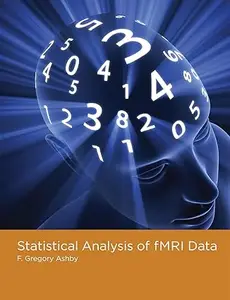
Free Download F Gregory Ashby, "Statistical Analysis of fMRI Data"
English | 2011 | ISBN: 0262015048 | PDF | pages: 349 | 3.4 mb
An overview of statistical methods for analyzing data from fMRI experiments.
Functional magnetic resonance imaging (fMRI), which allows researchers to observe neural activity in the human brain noninvasively, has revolutionized the scientific study of the mind. An fMRI experiment produces massive amounts of highly complex data; researchers face significant challenges in analyzing the data they collect. This book offers an overview of the most widely used statistical methods of analyzing fMRI data. Every step is covered, from preprocessing to advanced methods for assessing functional connectivity. The goal is not to describe which buttons to push in the popular software packages but to help readers understand the basic underlying logic, the assumptions, the strengths and weaknesses, and the appropriateness of each method.
The book covers all of the important current topics in fMRI data analysis, including the relation of the fMRI BOLD (blood oxygen-level dependent) response to neural activation; basic analyses done in virtually every fMRI article-preprocessing, constructing statistical parametrical maps using the general linear model, solving the multiple comparison problem, and group analyses; the most popular methods for assessing functional connectivity-coherence analysis and Granger causality; two widely used multivariate approaches, principal components analysis and independent component analysis; and a brief survey of other current fMRI methods. The necessary mathematics is explained at a conceptual level, but in enough detail to allow mathematically sophisticated readers to gain more than a purely conceptual understanding. The book also includes short examples of Matlab code that implement many of the methods described; an appendix offers an introduction to basic Matlab matrix algebra commands (as well as a tutorial on matrix algebra). A second appendix introduces multivariate probability distributions.
